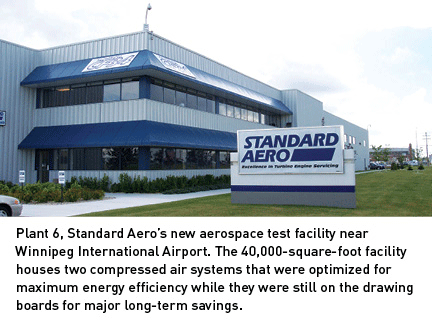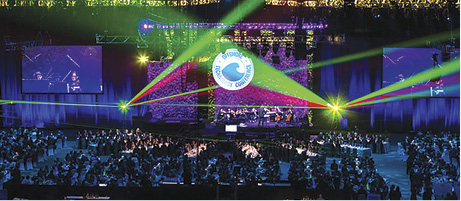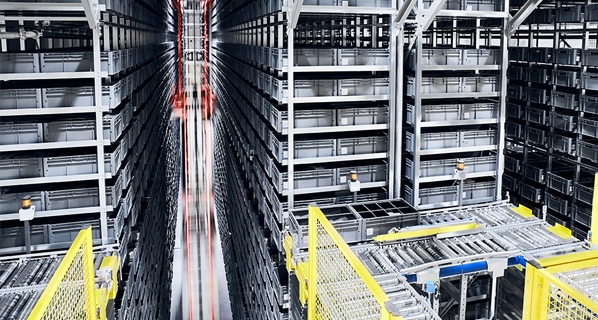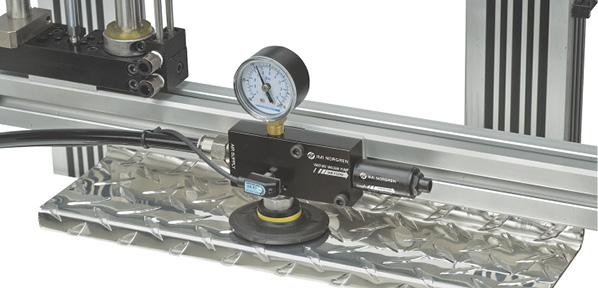Innovative Design at Aerospace Saves 86%
Two compressed air systems in Standard Aero’s CF-34 engine overhaul and test facility at its Winnipeg aerospace complex were installed that have virtually eliminated the high operating costs of typical compressed air systems during facility start-up and is now saving nearly $46,000 per year. Design elements included the installation of a variable-speed drive compressor; energy-efficient dryers, filters, and drains; and large high-pressure air storage with off-peak recovery.
In the initial planning stages, facility engineers were faced with a dilemma. The new facility needed a large compressed air system that could supply high production consumption in the future, however the initial facility air consumption as output ramped up over a number of years would be low, requiring a smaller system. A separate air system was also needed to supply a very large, but short duration, air demand during engine testing of CF-34 jet engines. The engineers knew that installing two oversized systems would significantly increase initial operating costs, but they needed to be sure the system had enough reserve capacity to handle all possible conditions.
Previous practice was to produce compressed air using compressors running in modulating mode and then drying the air using fixed-cycle desiccant dryers. In modulating mode, a typical compressor consumes no less than 70% of its full load power even though it may only be producing a small fraction of its full capacity. Fixed-cycle desiccant dryers consume a constant supply of compressed air, about 15% of the rated dryer output capacity, to regenerate the internal desiccant beads that strip the moisture from the compressed air.
The company installed a variable-speed drive compressor, rather than a modulating compressor, to supply the air needed for process machinery and tools in the facility. VSD compressors have excellent turndown characteristics, which means a compressor sized larger for high future loads can be installed initially but without paying the penalty of high operating costs.
Since specialized facility processes require air to be supplied at -40 degree dewpoint, a desiccant dryer was installed, but with an energy management control option. The control constantly monitors the dewpoint of the dryer output and turns off the dryer purge air until the internal desiccant beads are fully saturated with moisture. This significantly reduces air consumption, especially when facility airflows are much lower than the dryer rating or when compressed air moisture content is lower than normal.
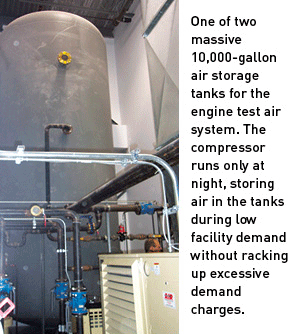 Dual dryer inlet filters were also installed to reduce the pressure drop normally associated with coalescing filters by 75%. Standard Aero chose to install a large 3,800-gallon storage receiver to stabilize facility air pressure and minimize the number of compressor starts. A pressure/flow controller was installed to maintain a constant regulated air pressure in the facility to protect critical processes and to reduce the artificial demand caused by higher-than-required facility air pressures.
Dual dryer inlet filters were also installed to reduce the pressure drop normally associated with coalescing filters by 75%. Standard Aero chose to install a large 3,800-gallon storage receiver to stabilize facility air pressure and minimize the number of compressor starts. A pressure/flow controller was installed to maintain a constant regulated air pressure in the facility to protect critical processes and to reduce the artificial demand caused by higher-than-required facility air pressures.
A second compressed air system was required to supply air required to get the CF-34 jet engines the facility overhauls up to speed before they can be fired with fuel for testing. This application requires a very high flow of air but for a short duration—only two or three times per day. One way to supply this air is to produce it all using a large air compressor, however if this were done, a 250-hp unit would be required. Rather than purchasing a large compressor, the engineers designed a system to store air produced by a smaller 75-hp compressor in two large 10,000-gallon storage receivers at 160 psi. This volume of storage was carefully sized to supply all of the engine test needs throughout a worst-case scenario engine test without needing to run the installed 75-hp, 160-psi air compressor during the day. The unit is scheduled to run at night during off-shift, thereby avoiding high electrical demand charges. The use of a thermal mass refrigerated dryer rather than a fixed-cycle desiccant dryer saves significant operating costs because the air compressor does not need to constantly run to feed dryer purge.
The system was measured and verified a few months after initial start-up and has resulted in an 86% savings over the base case worth of $45,880 per year. With local utility financial incentives applied, the simple payback for the project calculates to under 1.5 years.
By Ron Marshall, Compressed Air Challenge
This project is an example of the high savings that are available by applying the principles contained in Compressed Air Challenge’s Best Practices for Compressed Air Systems Manual available at www.compressedairchallenge.org.

